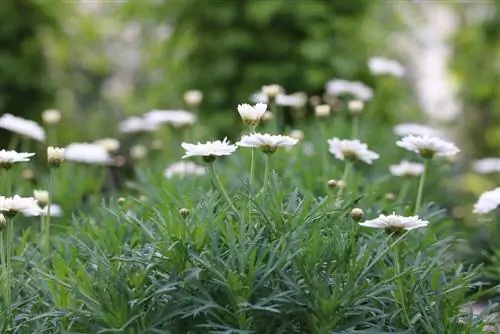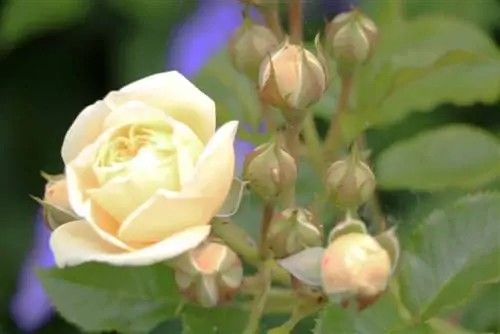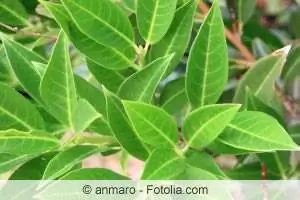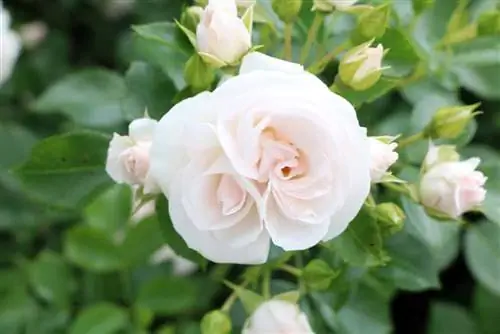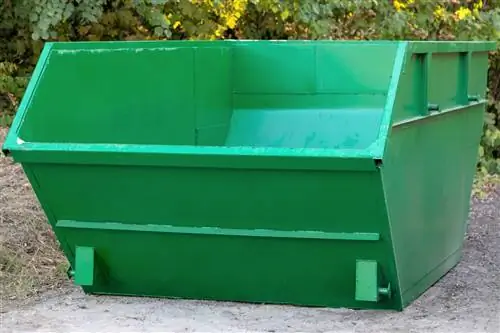- Author admin [email protected].
- Public 2023-12-17 03:39.
- Last modified 2025-01-24 12:45.
Similar to the fuchsia, the bush marguerite can be cultivated in pots, giving gardeners the opportunity to place their plants in the garden in a creative way.
Origin of bush daisies
The bush marguerite (Argyranthemun frutescens) originally comes from the Canary Islands, but it has now settled throughout Europe. It belongs to the Asteraceae family, which can be clearly seen from its flowers. The daisies are perennial, but they are not resistant enough to the temperatures in our winters. The buyer should consider this and provide winter accommodation.
Special features of bush daisies
At the beginning of the gardening season, the pretty bush daisies will be available for purchase again in shops and garden centers. As beautiful potted plants, they delight gardening enthusiasts with a huge number of wonderful white flower heads. The alternate, gray-green leaves and flowers, whose diameter is between 4 and 6 cm, are located on straight stems. The inner basket of the flower has an intense yellow color, while the surrounding petals shine in pure white. An intense scent attracts many insects such as bees, bumblebees or butterflies, which then contribute to the natural reproduction of the plants. However, daisies not only attract beneficial insects, pests are also attracted to the plant's scent. For example the spider mites and the aphids.
The different care measures
Sometimes you expect an abundance of flowers, but the opposite happens, only a few flowers can be seen. The reason may be incorrect care. The following key points should be taken into account for comprehensive care:
Location
The right location is very important because it definitely needs a location in full sun, because the daisies love the sun. A wind-protected location is of course also preferred. When the ice saints are over, the potted plants can be brought outside, including the bush daisies.
Substrate
You should use good, unfertilized soil for the pots that surrounds the roots of the plants well. It should be rich in nutrients so that the plant is well supplied and does not show any symptoms of deficiency. Since only a small amount of soil is available to the plants in a pot, the soil should be loosened more often to ensure water and air exchange. The earth should not crust over.
Pouring
The flower lover should pay close attention to the potted plants, because the daisies need a lot of water. On particularly hot days you should even water them twice a day because they rely on daily watering. The walls of the bucket also heat up, which further dries out the earth. The flower lover should remember this and not forget to water them every day. But he should avoid waterlogging in the pot, which in turn is just as damaging to the plant as too little water. It should be remembered that the roots of the daisies should never dry out. When they suffer from drought, they drop their leaves and flowers. When this happens, it can sometimes be too late to save the plant.
Fertilize
When the plants develop their flowers, they should be given additional nutrients through weekly fertilizer applications. You should ask your gardener or specialist retailer which fertilizer is best suited. It is best to use a liquid fertilizer so that it is quickly available to the plant. The roots can absorb the liquid fertilizer quickly because fertilizer in granular form must first dissolve. The plant will thank you with a multitude of flowers and a long flowering period.
Cutting bush daisies
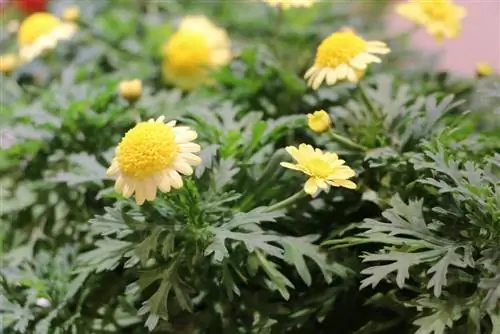
Regular care of the plants is just as important as fertilizing. Wilted flowers should be removed, as should broken twigs or brown leaves. These care measures strengthen the plant. If you cut back the daisies heavily in the summer, they will sprout strong branches again and produce a large display of flowers again. The flower lover should decide how much to cut back or whether only wilted parts should be cut out based on the plant, because radical pruning is often not necessary.
Winter quarters for bush daisies
- In principle, the plants can stay outdoors for a long time.
- But if the temperature drops below 5° C, then the plants should be moved to their winter quarters.
- It should be bright and airy and the temperatures should be between 5° and 10° C.
- The bush marguerite is now prepared for winter by shortening the shoots of the plant to around 4-5 cm.
- However, there are also opinions that pruning should only be done when the plant is to go outdoors again in spring.
- You only water enough to prevent the root balls from drying out. Be sure to avoid waterlogging!
What you should know about bush daisies in brief
If you follow all the instructions, you will have a beautiful plant full of flowers. You should also look out for pests such as aphids or spider mites, which can also harm the plant. In a sunny location, gardening enthusiasts have a great eye-catcher and many visitors will cast an envious glance at the beautiful plant.
The bush daisy is a special growth form of the common meadow daisy. Like this one, it has a long, somewhat angular stem that easily forms runners and on which both the serrated leaves and the inflorescences are located. The yellow individual flowers in the center spread a strong smell that is said to attract insects, some of which are involved in the propagation of the bush daisy, but like its relative it also forms runners in addition to the air sprouts.
- The bush daisy is planted in ordinary potting soil without the addition of fertilizers, to which it responds very well.
- Like the meadow daisy, the shrub daisy cannot tolerate soil that is too moist.
- Since the plants are planted in containers, they need to be repotted regularly after their flowering period.
- In the garden, part of the bush can be dug up with the roots and repotted.
- The flowering period of the bush marguerite extends from May to October, although depending on the weather it often fades before October.
- Pruning the bush marguerite is not necessary. Protruding leaves and the side runners can be trimmed if they are too wide.
- However, this pruning should be done either well before or shortly after the flowering period so that the flowers and their buds are not damaged.
- Runners of the bush marguerite can be removed if you do not want further propagation.
- The bush marguerite also thrives on less nutrient-rich ground and up to the alpine high- altitude regions.
- It is less robust than the meadow daisy, which copes better with weather-related problems.

